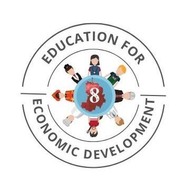
(View Complete Item Description)
This is a unit about the design and manufacturing of a chair consisting of three lessons. First, students will research the stylistic trends throughout history by exploring a slide show presentation and viewing the Art of Seating from the Museum of Contemporary Art in Jacksonville, Florida. Students will choose a chair from this collection to use as inspiration. They will analyze the style, elements and principles of the design and participate in a discussion on form vs. function. A one-page written paper will be due at the end of this lesson.
Next, students will be tasked with creating an original 2-dimensional design of a chair. Students will have the option of drawing or using Google Sketchup for the design process which will extend over 2 days. The students will continue to be led in discussions related to innovation, form vs. function and other vocabulary will be introduced. Once the designs have been completed, students will write an artist statement for their display.
Lastly, students will learn about the KI company in Bonduel Wisconsin and the process of Lean Manufacturing, particularly cost effectiveness, standard work instructions and quality checks/internal audit. Students will be assigned to work in groups; they will choose one chair design from a group member. Student groups will create a list of materials needed to create the chair and will come up with a list of instructions on how to assemble it. Students will assign a cost value to each material used in the chair design and how much of the material is used. They will figure out the amount of time and resources it would take to create the chair such as wage, manpower, and tools needed. Students will create a chart with this information as they discover what it takes to go from the process of creating design to the manufacturing of the product. Students will then fill out an “internal Audit/quality check” form as their self assessment and reflection of their work and participation in this unit.
Material Type:
Lesson Plan,
Unit of Study
Author:
Danielle Piparo Morris




















